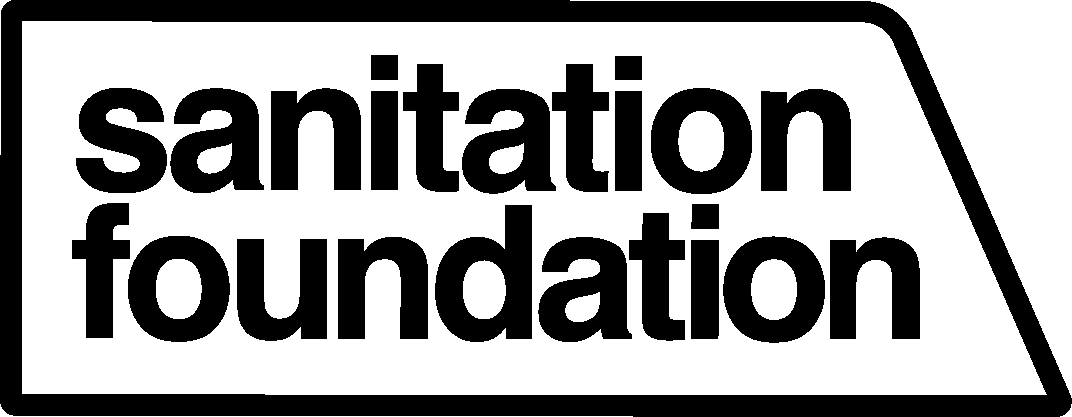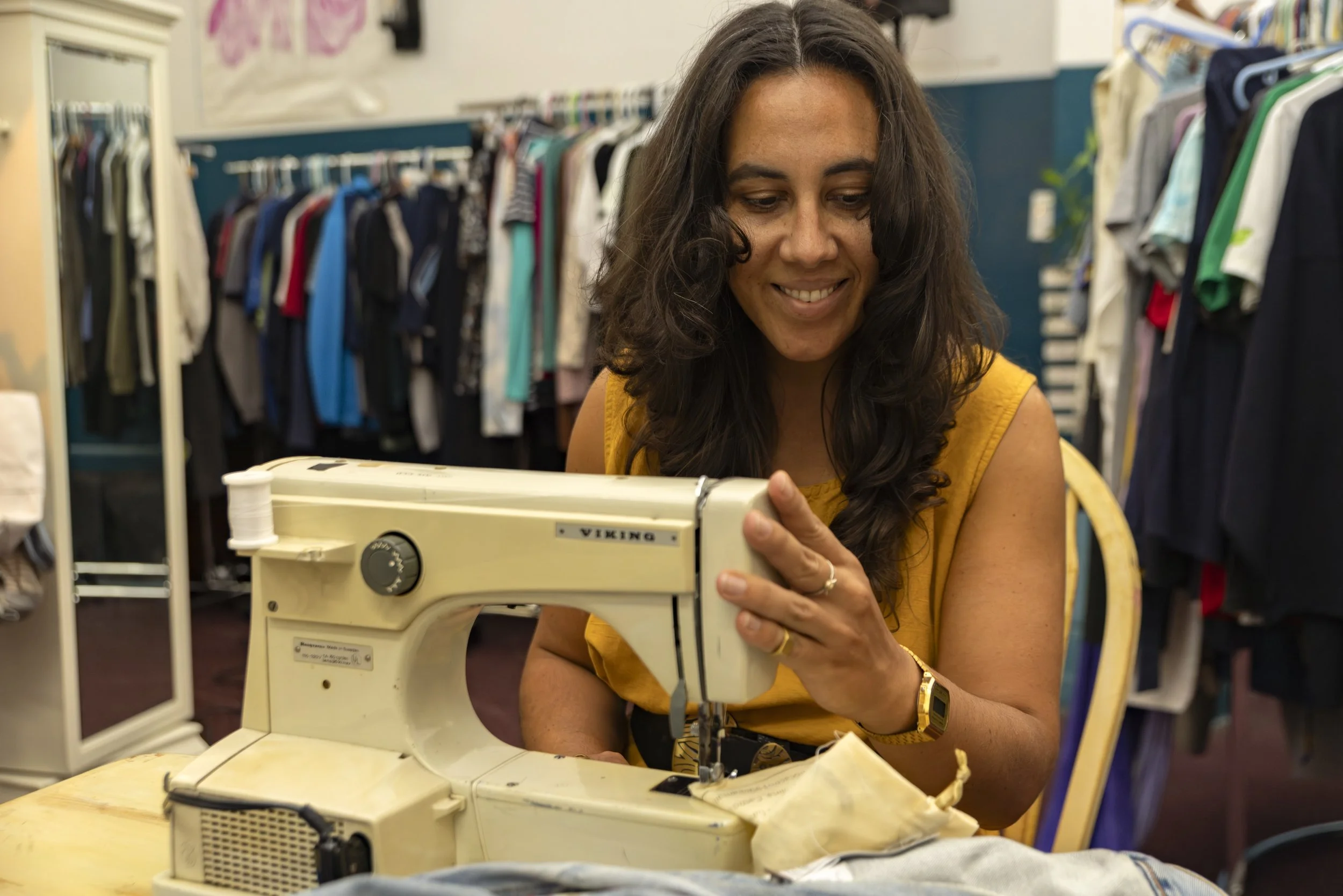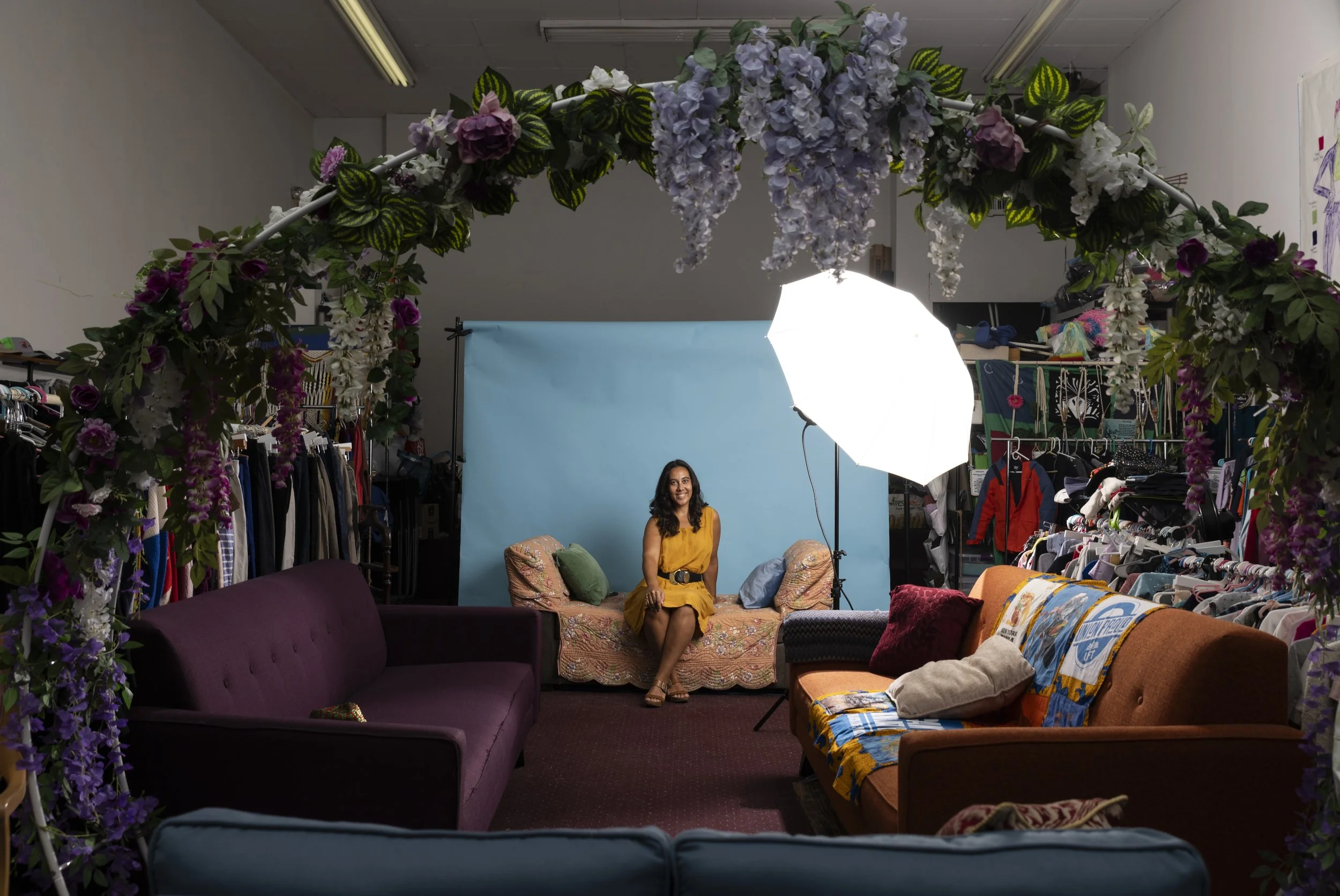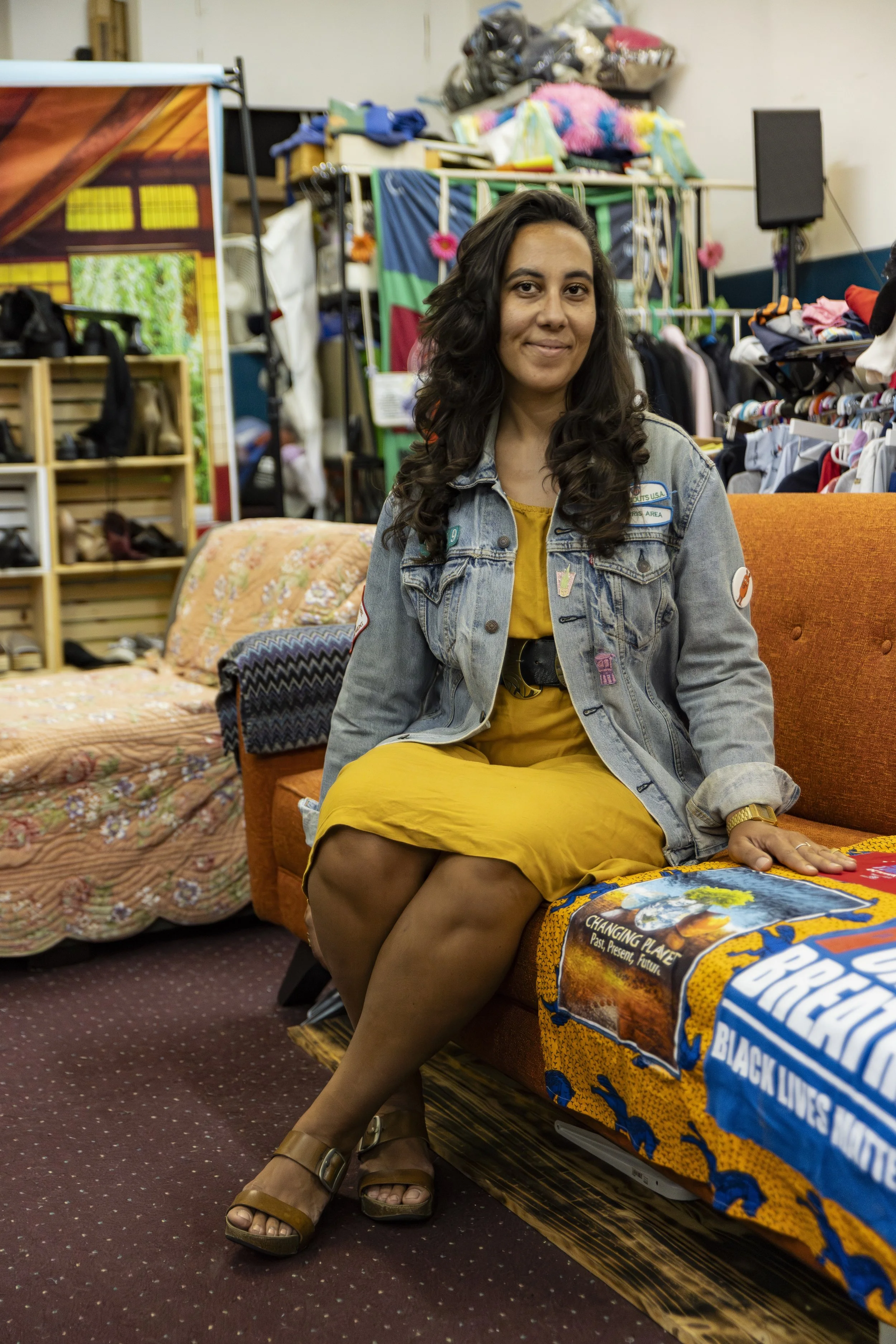Waste Pioneer: Andrea Reyes, founder of the Sustainable Fashion Community Center
“Recycling, ‘downcycling,’ recirculation must be an interactive, community activity that rivals our passion for shopping. The marketing, education, incentives, and dopamine release from shopping can be and is found through swapping, thrifting, and even deconstructing items for their next reincarnation.”
New York generates massive textile waste—5% of its total residential waste, or the weight of 3,500 subway cars every year. As New York Fashion Week kicks off, we’re highlighting Andrea Reyes, a longtime partner at DSNY’s DonateNYC program, committed to reducing NYC’s textile waste. Andrea is the founder of the Sustainable Fashion Community Center and Executive Director of the NYC Fair Trade Coalition. She also advocates for DSNY’s refashionNYC textile collection program, helping install collection bins in fashion-forward spaces like LIM College.
Andrea at the previous location of the Sustainable Fashion Community Center in Harlem, a place for all New Yorkers to come to find new old clothes, donate their things, co-work, and build local community.
A Leader in Sustainable Fashion
Andrea has spent her career exploring every corner of the supply chain, teaching courses in retailing, logistics, and sustainability at FIT, LIM, Parsons, Pace, Baruch, and Kent State. Currently pursuing a Doctorate in Business Administration at Pace University, she focuses on ESG and corporate management. Passionate about community-driven change, Andrea believes that local efforts are key to making sustainable fashion more accessible. “Efforts to push the sustainable fashion movement forward are showing progress,” she says.
Andrea believes in the power of hyperlocal activations and community education to help achieve a less wasteful apparel industry.
Visitors to the Community Center could always find new and affordable secondhand clothing; members of the NYC Fair Trade Coalition could also find clothing for as little as $1 per item
Building a Sustainable Fashion Community
As the Executive Director of the NYC Fair Trade Coalition, her mission has been to create a safe space for sustainable fashion advocates and businesses, as well as a meeting hub for like-minded individuals that provides equal access to information, resources, and community. The organization started by meeting at various nonprofit, academic, business partner locations around New York City, hosting panels, workshops, fashion shows, swaps, and sustainable shopping opportunities.
“The key terms of the Coalition’s mission: Listen, learn, and join. Activate, incubate, educate,” says Andrea.
These meetings evolved into the opening of the Sustainable Fashion Community Center (SFCC) in East Harlem. SFCC became a space for workshops, co-working, and ethical consumer education, emphasizing “hyperlocal services, education, and democratizing fashion.” More than that, it transformed into a major textile salvage and reuse hub, collecting over 50,000 lbs. of clothing in just three years. Volunteers sorted donations, resold garments, and collaborated with another DonateNYC partner based in the Bronx, Green Tree Textile Recycling to responsibly re-distribute secondhand clothing.
The Need for More Textile Recycling
Andrea sees textile recycling and secondhand shopping as essential to reducing waste and strengthening community. She envisions textile drop-off points or circulation hubs on every few blocks—like Starbucks—to make donating and swapping effortless. “It has to be accessible, otherwise we’re not going to be able to make an impact on our waste issues,” she explains. More secondhand options mean fewer people buying new, reducing unnecessary production.
Beyond sustainability, SFCC also provided a healing space for fashion consumption and donation.
“Our space acted as a special type of retail therapy,” Andrea says. “People see their items as an extension of themselves, or an investment, and no one wants to be put in the trash.” She compares it to Friends character Phoebe’s love for Christmas trees—just as Phoebe wanted each tree to fulfill its destiny, Andrea believes New Yorkers want their clothing to go to a good home.
“[Not everyone views] their clothing or scraps as garbage; they feel bad about putting it in garbage. They want a place to put it, and we filled that need.”
Making friends with New Yorkers interested in circularity, while finding and salvaging clothing they loved, is a key aspect of the Community Center
Reframing Our Relationship With Waste
Andrea emphasizes that volunteers sorting clothing at SFCC were actually less likely to take items home compared to people who came to shop. Handling textiles firsthand—folding, organizing—helped them resist the urge to buy new.
“We need to have a more intimate relationship with our waste. Textile waste is an easy place to start. Volunteers who helped sort and organize at first were a bit timid to reach into a bag for fear of the unknown, but quickly switched to viewing it as a bag of wonders or a treasure trove.”
“Sustainability is the triple bottom line,” Andrea says—that is, it means people, planet, and profit—a circular system where economic, social, and environmental health are interconnected. “It IS circularity. The circular connections between economy, community, and environmental health are endless. In order to continue to remain one of the most vibrant, competitive cities in the world, we must acknowledge one of our greatest resources: our trash.”
In other words, most trash doesn’t have to be trash, if only there was more opportunity to reuse it.
Engaging More New Yorkers in Textile Recycling
When asked how we can engage more New Yorkers to take stock of their textile waste, Andrea says it’s about meeting people where they’re at.
“There has to be something for everyone, and the first is a welcome greeting with a smile.”
“Not everyone cares about the environment, not everyone cares about clothing quality…We lack a place where we can meet all [community] needs. At the Community Center, some come to save money, while others come to shop their ethics, and corporate groups to [share their resources and participate in the cause]. The places need to be understood as being for the shared good. Everyone wants to feel needed, appreciated, and loved. From our most overlooked neighbors to influencers seeking the spotlight, all are welcome and treated with dignity in this third space. Most thrift stores or consignment stores won’t take SHEIN, but we will accept everything. ”
The Future of Sustainable Fashion in NYC
Looking ahead, Andrea believes gamification will motivate more New Yorkers to participate in textile recycling. Whether they’re rewarded by service or volunteering, sharing their impact (by weighing and emailing stats of reuse), or scoring items at a low price—“but not no cost, because an egalitarian pricing system removes the pressure of choice between items.”
She also calls for city initiatives to secure permanent spaces for sustainability-focused nonprofits. While SFCC is currently on hiatus, fundraising is underway to purchase a permanent building—a hub for the sustainable fashion movement that offers education, swapping, and secondhand shopping all under one roof.
“Coalition building is the only way forward,” Andrea says. “While the city, state, and country continue to go through significant changes, the local community level must remain vibrant and offer stable services to combat and promote both mental and physical health for citizens and planet.”
To learn more about textile waste reduction and NYC Fair Trade Coalition initiatives, visit nycftc.com. Andrea also encourages New Yorkers to join NYC Summer Streets if they’re interested in a community sustainability initiative, or sign up for her upcoming course: “How to Be a Community Organizer.”
Photography Credit: Alex Franklin, @alexfranklinphotos







